If you want to see the best germination rates from your seeding efforts, you must use a grass seed cover on your lawn. Peat moss or straw for grass seed are two of the most popular and affordable options, each with its own set of advantages and disadvantages.
Peat moss is a natural soil replacement made from vegetable matter that has partially decomposed and is utilized as fertilizer for grass seeds. Straw is what remains after the grain and chaff have been taken from cereal plants such as wheat and usually serves as soil cover.
Here’s all you need to know about covering grass seed, and peat moss straw. We’ve organized this article to show the pros and cons of using peat moss or straw, a proper comparison, and the suitable option for your lawn; keep reading to find out which is best for your new grass seed.
Contents
Peat Moss or Straw For Grass Seed – Quick Compare
Peat moss or straw for grass seed. Let’s look at which is better. We’ll discuss the benefits and disadvantages of these materials.
Key characteristics | Peat Moss | Straw |
Photo: | ||
Produced from: | Layers of partially decomposed plants such as moss or grass. | The stalks of grasses, particularly of such cereal grasses as wheat, oats, rye, barley, and buckwheat. |
Retention capacity: | Up to 97% but typically 82-85% | 15-20% |
Air porosity: | 90% | 46.39-84.24% |
Lawn Coverage: | One cubic foot of compressed peat moss covers 11 square feet at a depth of 2 inches | One bale covers an area of approximately 80-73 square feet to a recommended depth of 2 inches. |
Rate of seed germination: | Higher | Lower |
pH value: | Generally 3 to 4.5 Acidic | Between 8.5 and 9.5 Alkaline |
Benefits of Using Peat Moss for Covering Grass Seed
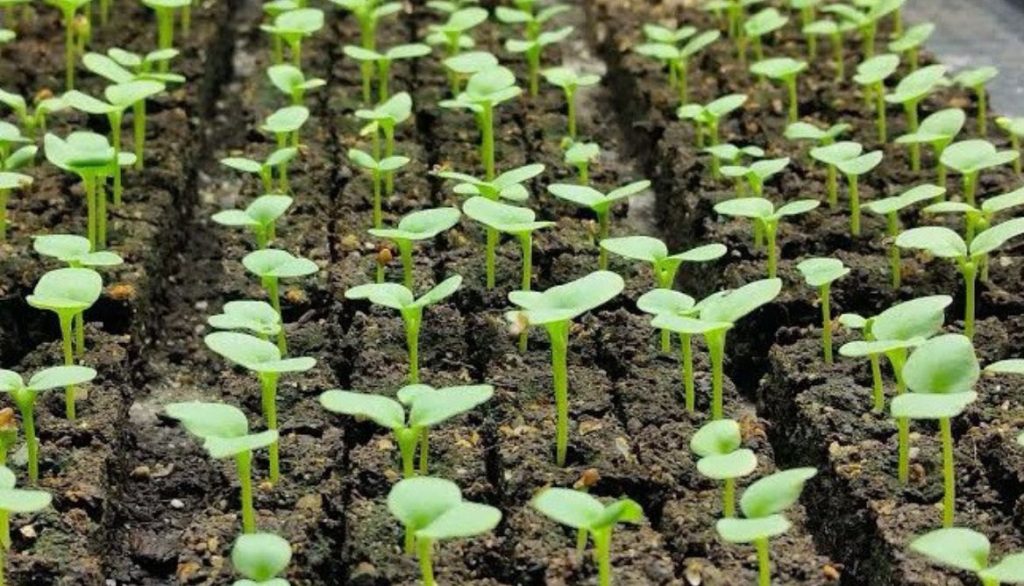
Sterility
Peat moss is sterile, so it contains no bacteria, fungi, or weed seeds that could harm your plants. Sterilityis an excellent trait in a grass seed starter. Seedlings are incredibly delicate, and they require a clean, safe environment in which to grow. That habitat is provided by peat moss.
Water Retention
Peat moss can store more than twice its weight in water. Add peat moss to seeding as it aids to retain moisture in lawns. Although peat moss absorbs water but also keeps soil from becoming excessively wet because it releases moisture slowly.
Weight and Loft
Peat moss does not compact with time like heavy soil because it is light in weight and has a loose texture. However, with peat moss, your soil will be looser and you will not need to aerate as frequently.
Improves water drainage and aeration
Peat moss stores water and nutrients needed for growth. Peat moss unlike straw provides the best of all worlds: peat moss helps to retain moisture for plants while also allowing for good drainage.
Protects grass seeds from elements and birds
Peat moss keeps new seeds from being blown away by elements of weather such as high winds and heavy rains. Putting peat moss over grass seeds before they germinate helps keep birds and other animals away from the seeds, which could be eaten before they mature.
Peat moss doesn’t bring weeds or pathogens to the lawns
If you want to avoid continuous battles with weeds on your lawn, use peat moss before planting grass seeds. There are no weeds or seeds in peat moss. They are also free of pathogens that cause turf disease.
Peat moss encourages fast sprouting in grass seeds
When you mix Peat moss into your soil, it boosts the seed germination rate of grass seeds. Peat moss provides these elements in abundance to grass seeds, allowing them to develop faster and produce more sprouts.
Disadvantages of Using Peat Moss for Covering Grass Seed
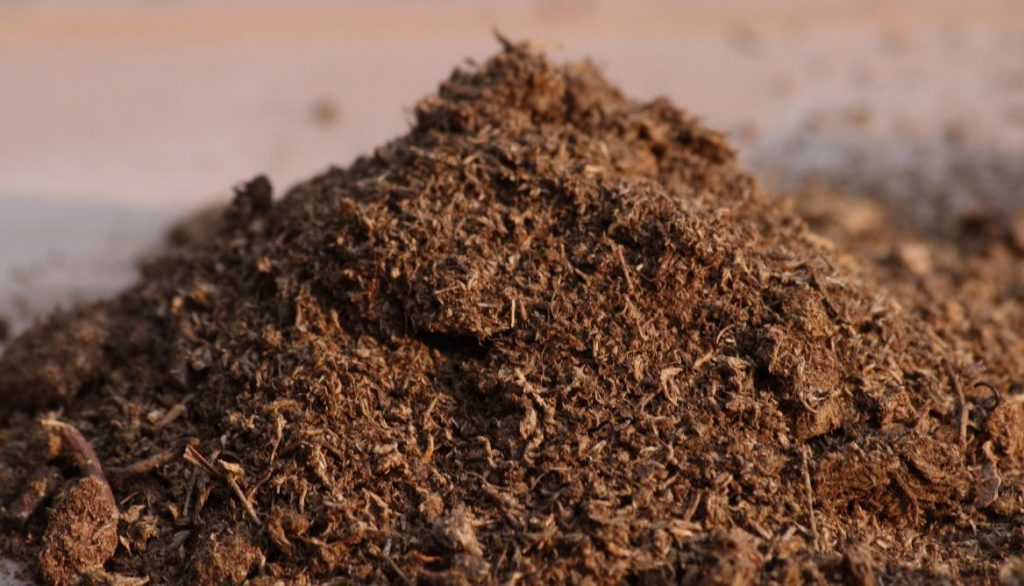
Peat moss is hydrophobic
Peat moss is hydrophobic i.e it repels water when dry!, Instead of swiftly soaking in, moisture beads up and rolls off. Wetting large amounts of peat moss requires the addition of a surfactant or wetting agent to the water.
Erosion and Wind
Dry peat moss is frequently resistant to erosion, particularly until it reaches a crucial depth in its development, at which it becomes unstable and sensitive to erosion.
Soil Acidity
Peat moss has acidic pH characteristics because it produces hydroxide, which adds it to the soil, causing it to become much more acidic. These can be beneficial to some plants but also detrimental to alkaline-loving plants.
Peat moss is expensive
It is a costly garden soil addition when compared to other options. Peat is not a local resource and is mainly brought from peat bogs in Canada, which increases the expense.
Peat moss contains greenhouse gases
It has a high content of carbon and greenhouse gas methane. Even small amounts of peat moss can easily add these substances to the soil when disturbed. If the weather is warm enough in the region where it is thriving, these gases could be released into the atmosphere contributing to climate change.
Pros of Using Straw for Covering Grass Seed
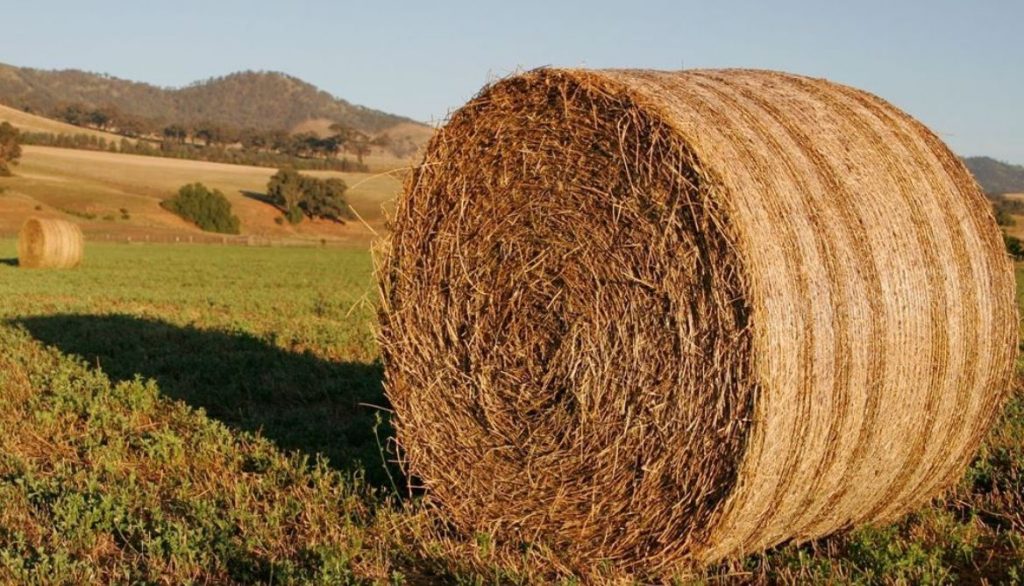
Straw is a sustainable resource unlike peat moss and has many compelling reasons why it makes an excellent grass seed cover and a few reasons why you might choose straw for your lawn to cover grass seed.
Soil Composition
The biggest positive of using straw as a cover for Augustine grass seed is the additional nutrients it brings to your soil if it is allowed to properly decompose. It has a similar effect to spreading grass clippings. This means that it breaks down into an organic material that aids and encourages the growth of microbes in your soil. Furthermore, straw is a largely sustainable resource that does not harm or affect the environment in any negative way. Straw is environmentally friendly because it does not contain chemicals. Straw has little effect on acidic soils or microbial growth.
Erosion Prevention and Discourages bird activity
Straw helps to protect new grass seedlings when used to cover the new lawn before germination occurs, which will keep the seeds in place and hide them from birds during wind and rain. The straw will provide a layer of cover for a newly seeded lawn from excessive sunlight and also allow new grass seeds to grow without them all being eaten by birds.
Moisture Retention
Covering newly seeded lawns with a straw keeps the soil moist and warm until the seeds develop. Furthermore, it controls the quantity of sunlight that falls on the new grass seeds and protects them from severe weather conditions like rain, birds, and other seed-eating critters.
Prevents seed movement
If you don’t want the wind to blow away seeds or prevent soil erosion caused by weather conditions. Aged pine straw can aid in seed retention until grass seed germinates, fostering more uniform growth and preventing uneven areas in a new lawn.
Simple to apply and clean up
Straw is simple to apply and clean up. Certain straw kinds do not even require removal following grass seed germination. After a while, some straws will simply decompose into the soil, adding nutrients and organic matter to the ground.
Cons of Using Straw for Covering Grass Seed
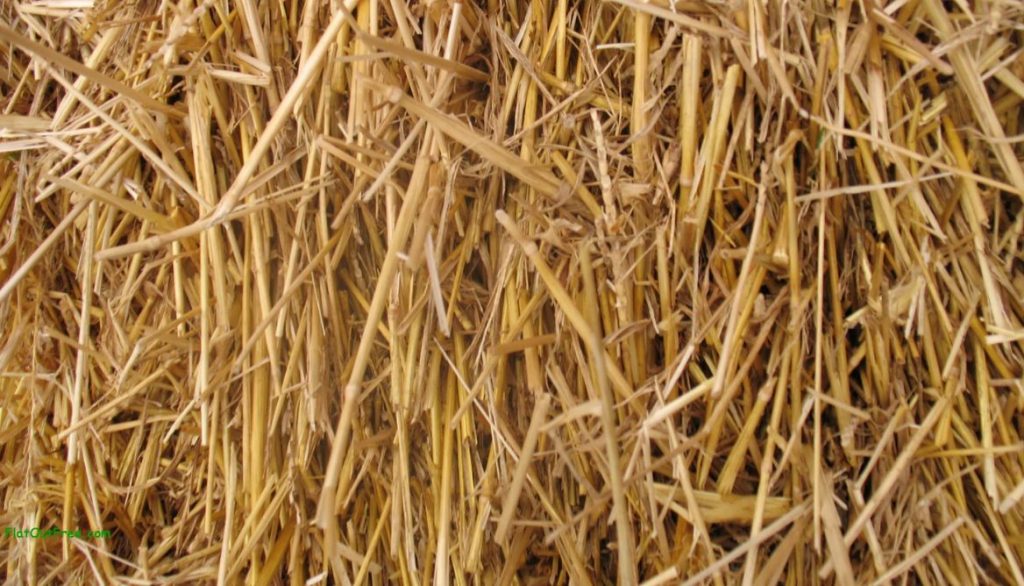
Straw is not sterile
The possible transmission of weed seeds to your land is a major disadvantage of utilizing straw as a cover for grass seeds. Straw, unlike peat moss, is not usually sold sterile. It can be, but it is frequently sold from a local field and may not have been subjected to stringent testing.
It May not be seed-free
Another negative effect of straw is that it nearly always contains weed seeds, which will likely sprout right alongside your newly laid sod.
It can damage new grass during the removal
If you cover the ground with straw too densely, grass seed germination will be impeded. You’ll need to rake off the unsightly straw after the grass is up, but will also risk damaging young grass blades and roots if you do.
Straw is not perfect, it has flaws
Too much straw can suffocate the seed, trap a lot of moisture, and prevent your grass seeds from germinating in your newly sown lawn. If you add a thin covering, your straw and seed will dry out and grow slowly.
FAQ
How thick should straw be over grass seed?
Only 1/4 inch of straw mulch should be applied to the newly sown lawn. If the straw mulch is too thick, it will rot.
How Long to Leave Straw on New Grass?
Grass seedlings should be covered with straw until they are 2 to 3 inches tall. When the seedlings reach this height, they are mature enough and straw can be removed after the first mowing.
What goes first, peat moss or grass seeds?
Peat moss is added to seedlings right after sowing grass seeds or the germination of grass seeds. Cover the area with around 1/4 inch of peat moss, regardless of the stage of the grass seeds. Water the peat moss lightly with a water sprayer set to mist immediately.
What soil do you put down before grass seed?
Crumbly topsoil is good for spreading grass seeds. If your garden soil is sticky and clay-like, try digging in a lot of compost to help strengthen its structure.
Will seeds germinate in peat moss?
Yes, using peat moss is effective at the seed germination of grass especially warm-season grasses. This is because peat moss retains water, which encourages seed sprouting.
Which Is Better Mulch Or Peat Moss?
Mulch surpasses peat moss in terms of weed suppression. Mulch is often created from locally available hardwoods and does not travel far. Peat moss is extracted from bogs and marshes where dead plant debris has accumulated, and it frequently travels vast distances to be sold.
Will grass seed grow through a straw?
Yes, grass seedlings should have grown through it after germination if it’s a thin coating of straw.
What happens if you use too much peat moss?
Excess peat moss will occupy space in the compost/nutrients. Adding compost to the lawn without first removing the peat moss will cause it to pour over the boxes before reaching the proper amount.
What to do with straw after the grass grows?
You won’t even have to do anything in certain circumstances because it will disintegrate into your freshly sown lawn. In other circumstances, the thin straw layer must be removed. It can also be used as compost, mulch, or animal bedding.
Does Grass Seed Grow Not Covered?
Although new grass seed can grow if left uncovered, it is normally beneficial to apply a layer of compost, topsoil, or straw over the top of the seed to keep it moist and aid in germination.
Can I Use Peat Moss Instead Of Mulch?
No, peat moss does not produce good mulch, although the container label may suggest so. Here are some reasons why peat moss is a poor mulch material — It’s so light that the wind can easily blow it away. — It isn’t very effective at weeds growth control.
Conclusion
Peat moss is more effective than straw at the germination of grass seed. This is because peat moss retains water, which encourages seed sprouting. Furthermore, another reason why peat is a superior choice to straw is that it does not support weeds growth and it will not introduce pests into your yard.
Straw not only carries weed seeds, but it also does not promote grass germination, as well as peat, does. When it comes to seed beginning, peat is the preferable option. Another point to note is that straw is more effective at giving nutrients and keeping your soil healthy. In terms of environmental stability, straw is superior, but peat moss is superior in terms of total effectiveness.
What would you prefer to use for your grass seed? Please leave your preference in the comment sections. Thanks for reading to the end.
- How to Get Potatoes to Sprout Eyes: Detailed Growing Guide with 3 Options - July 31, 2023
- Weight of a Medium Potato: Revealed in Detailed Guide - July 29, 2023
- Maris Piper Potatoes: 9 Substitutes You Should Know About - July 27, 2023
Hello! I’m Jessica Zander, a garden coach and consultant based in the Boston area (zone 6b), offering virtual consultations across the country and Canada.
I’ve been passionate about gardening since the early 1990s, and in 2022, I launched You Can Do It Gardening to empower individuals to feel more confident in their gardening endeavors.
Following a 30-year career in nonprofit finance and operations, I transitioned out of that field in mid-June of 2023 due to the growing demand for coaching services. Interestingly, my years of presenting financial statements to boards and finance committees proved to be valuable experience for teaching people about gardening! I enjoy sharing skills, providing guidance and suggestions, and collaborating efficiently with clients to make significant improvements to their outdoor spaces, both small and large. I also regularly teach at the Arlington Continuing Education and Cambridge Adult Education.
My approach is direct and practical, akin to Mary Poppins, but tailored to your garden. Clients find satisfaction in saving money and taking pride in their own gardening achievements.

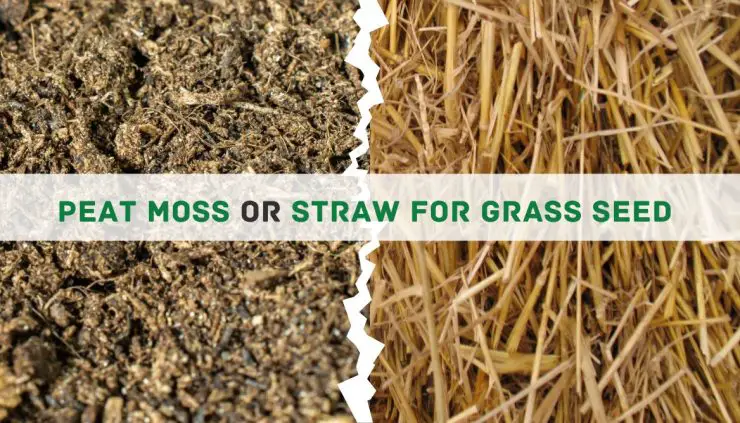


Add comment